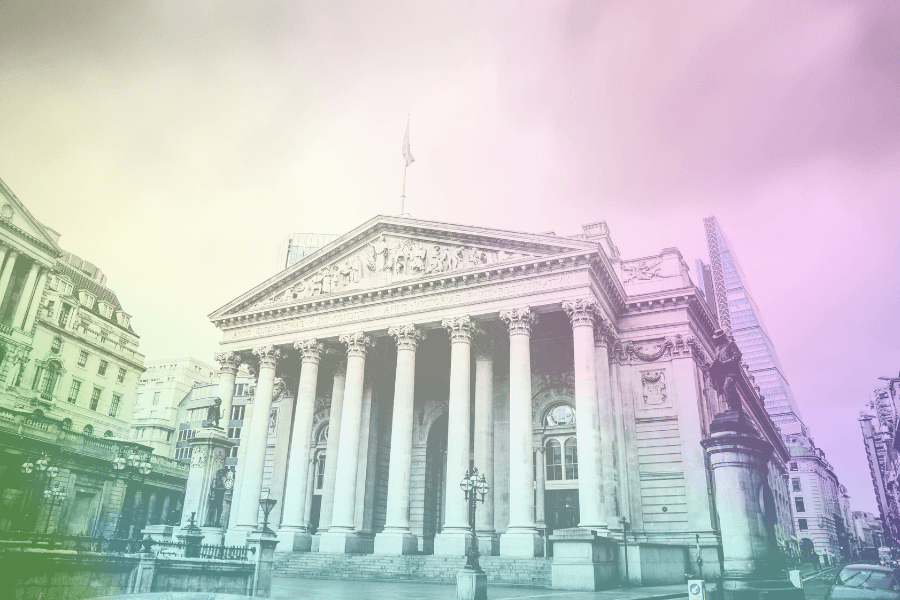
From Seashells to Stablecoins - The Future of Money
Humans have traded shells for grain, gold for silk, and paper for promises. But the fundamental need has never changed: trusted systems for exchanging value. Throughout history, we've invented increasingly sophisticated solutions to a remarkably consistent problem—how to trust each other when transferring value across time and space.As a founder building in the stablecoin space, I'm fascinated by this journey. The evolution from physical tokens to digital currencies isn't just a technological progression—it's a continuing quest to solve ancient human problems with new tools.

Humans have traded shells for grain, gold for silk, and paper for promises. But the fundamental need has never changed: trusted systems for exchanging value. Throughout history, we've invented increasingly sophisticated solutions to a remarkably consistent problem—how to trust each other when transferring value across time and space. As a founder building in the stablecoin space, I'm fascinated by this journey. The evolution from physical tokens to digital currencies isn't just a technological progression—it's a continuing quest to solve ancient human problems with new tools.
Trust Carved In Stone
Our earliest monetary systems weren't primitive at all. They were elegant solutions to fundamental human needs. When ancient civilizations used cowrie shells or carved stones as currency, they were establishing core principles that still govern money today: scarcity, recognizability, durability, and community consensus. These weren't just random objects—they were technologies of trust. Gold and silver emerged as natural successors because they embodied these principles even better. Their physical properties made them difficult to counterfeit, naturally scarce, and universally recognized. The trust was built into the material itself. What's fascinating is how these ancient systems still influence our expectations of what money should be. We still want something scarce, recognizable, durable, and backed by consensus. The forms change, but the principles endure.
Paper Promises Changed Everything
The invention of paper money represents one of the most profound psychological shifts in economic history. Imagine the leap of faith required—accepting paper in exchange for goods simply because it represented gold stored elsewhere. Paper money solved the portability problem. You could conduct large transactions without moving physical metal. But it created a new vulnerability: the need to trust institutions rather than materials. This was a radical shift. Trust moved from the physical properties of currency to the institutions issuing it. If gold solved the problem of trust through physical characteristics, paper solved the problem of portability while creating a new trust challenge. We're still living with the consequences of this shift today.
Digital Banking's Broken Promises
The digitization of banking was supposed to perfect money—making it instantly transferable while maintaining institutional trust. But anyone who runs a business knows the reality falls painfully short. I've watched small businesses and professionals struggle with a financial system that wasn't designed for them. The friction points are numerous and costly:
⦿ International transfers take days and cost a fortune. A freelancer in Europe waiting for payment from a U.S. client might wait up to a week while paying obscure fees at every step. This breaks cash flow planning and limits global partnerships.
⦿ Business owners juggle multiple disconnected systems—invoicing here, banking there, payments somewhere else. This fragmentation wastes time and causes errors that no one can afford.
⦿ Access to working capital remains shockingly difficult. Traditional underwriting doesn't understand new business models like digital agencies, creator economies, or freelance networks.
⦿ Payment processors take 2.9% plus fees from every transaction. For businesses with thin margins, this is a constant drain on profitability.
⦿ The compliance burden falls heaviest on the smallest players. Navigating taxes, KYC, and regulatory requirements across borders requires resources most don't have.
Perhaps most disturbing is how poorly traditional finance serves modern work patterns. Freelancers, digital nomads, and gig workers often find themselves excluded from basic financial services designed for a previous era.
Why Traditional Fintech Falls Short
Many promising fintech solutions have emerged to address these problems, but most fail to deliver true innovation. The hard truth is that most fintech companies improve the user interface without changing the underlying infrastructure. They wrap legacy banking in better apps, but still route through the same expensive, slow networks. Real innovation requires rebuilding the plumbing, not just reskinning it. This limitation isn't always their fault. Regulatory bottlenecks often prevent the most innovative solutions from scaling. Many technically possible improvements remain legally complicated, especially across multiple jurisdictions. But the result is the same: a digital financial system that looks modern on the surface while operating on infrastructure designed for a pre-internet world.
Stablecoins As The Next Evolutionary Step
If gold solved the problem of trust, and paper solved the problem of portability, then stablecoins aim to solve the problem of programmable, borderless, and scalable trust. Stablecoins continue the long human tradition of creating trusted, consensus-driven instruments for value exchange. But they also introduce a new paradigm—digital, programmable, and potentially decentralized—that redefines how trust is established and maintained. They stand at the intersection of ancient principles and futuristic design. Whether they endure will depend on how well they preserve trust while navigating this hybrid identity. At their core, stablecoins aim to combine the best of both worlds: the instant, programmable nature of digital currencies with the stability and trust of traditional money.
Reinventing The Check For The Digital Age
At CHEQs, we've approached this challenge by reinventing one of history's most successful financial innovations: the paper check. The original paper check was revolutionary because it separated the instruction to pay from the actual transfer of value. This allowed commercial transactions to scale beyond face-to-face exchanges. But paper checks had two fatal flaws: they could be forged, and they might bounce if funds weren't available when presented. Our CHEQ transaction model solves both problems. Each CHEQ is cryptographically tied to the sender and receiver only, making forgery impossible. And unlike a traditional check, a CHEQ carries the funds along with it—like a prepaid card that can only be unlocked by the intended recipient. This creates something unprecedented: a guaranteed blockchain transaction that combines the familiar usability of a check with cryptographic security.
Making Self-Custody Feel Natural
Self-custody represents a fascinating paradox in financial psychology. It's deeply intuitive in principle—"it's mine, I should control it"—yet intimidating in practice for most people. I think of it as both ancient and futuristic. Holding gold in your hand is the original self-custody. Managing cryptographic keys on your phone is its digital descendant. But psychological barriers to adoption are significant. People fear losing private keys or seed phrases because, unlike passwords, there's no "forgot my key" button. That sense of irreversibility feels risky compared to the safety nets built into traditional systems. The cognitive load is also overwhelming for most users. Managing keys, understanding wallets, distinguishing between hot and cold storage—it's too much. Most people don't want to be their own IT department. They just want their money to work. There's also a deep-seated psychological comfort in delegating responsibility: "If something goes wrong, the bank will help." Self-custody flips that on its head: you're both the user and the backstop. At CHEQs, we've tackled this challenge by abstracting complexity without removing custody. We've built a UX layer that feels like modern software—familiar, guided, and safe—while still keeping keys and control in the user's hands. We've reimagined signing in with email, backed by a new kind of account which works with a PIN Code, removing the need to manage seed phrases directly. The goal isn't to make users "be their own bank." It's to give them a simple message: "You're in control. And we've got your back."
Money As A Language
I often think of money as a language—a way for humans to communicate trust, intention, and value across time and space. And like any language, the "grammar" of money defines what we can express, how clearly, and to whom. Some of these grammar rules in traditional finance have become outdated and inefficient. Consider the rule that "trust must precede action." Before you transact, you must know and trust the counterparty. Banks require KYC. Merchants need credit checks. Freelancers ask for upfront deposits. This slows everything down. Distrust becomes the default. Value can't flow until trust is painstakingly established—or risk is swallowed. Another broken rule is that "clearing and settlement are separate." Payment instructions happen now, but actual value moves later—sometimes days later. Checks take days to clear. Bank transfers cross multiple intermediaries. This creates friction and working capital constraints. Perhaps most wasteful is the assumption that "disputes are inevitable." Because of trust gaps and delayed settlement, every transaction carries the possibility of reversal, fraud, or litigation. We spend enormous resources managing exceptions, not just facilitating flow. Guaranteed transactions—like those enabled by CHEQs—fundamentally change this grammar. With programmable guarantees, two parties can transact without knowing or trusting each other. Funds are locked, outcomes are defined. Value releases only when agreed conditions are met. Trust becomes implicit in the system, not required between users. Transactions are final the moment they're executed. No multi-day settlement. No "pending" or "processing" limbo. Value flows at internet speed, not banking speed. Most importantly, this new grammar turns money from a static noun into a dynamic verb. Traditional systems say "I paid you." (Full stop.) CHEQs-style transactions say "I'm committing to pay you if you do X, by Y date, and only under Z conditions." This brings nuance, intent, and automation to value exchange. It's like adding if-statements, variables, and functions to a language that previously only said "yes" or "no."
The Invisible Revolution
When I look ahead, I don't see stablecoins simply as faster payments. I see them creating profound second and third-order effects once they become invisible infrastructure—as common and unremarkable as email. The obvious first-order effects are easy to imagine: instant global payments, disintermediation of traditional financial services, efficiency gains for businesses, and inclusion for the underbanked. But the second-order effects will reshape our economic landscape. We'll see the rise of truly global labor markets where people work and get paid across borders in real time. Freelancers, creators, and micro-workers will operate without the delays or conversion losses that currently fragment these markets. Traditional banking will unbundle into micro-services: custody, credit, compliance, risk, identity. Wallets, protocols, and smart contracts will handle specific financial functions. The concept of "your bank" might disappear, replaced by modular financial stacks chosen by the user. When transactions are instant, fees near-zero, and trust programmable, new economic models become viable. Pay-per-second or pay-as-you-use models for software, content, and services. Real-time royalty splits for creators and collaborators. Subscriptions that become continuous relationships rather than monthly charges. The third-order effects get even more interesting. Communities in politically or economically unstable regions might create parallel financial systems running on stablecoins instead of local currency. This could force governments toward either authoritarian crackdowns or radical openness. With programmable money and new governance tools, communities could design their own economic rules. Mutual aid groups, worker collectives, and local clubs would operate as self-governing micro-economies where value isn't just exchanged but coordinated with automated accountability. Perhaps most profoundly, trust itself will be redefined. The question "Do I trust this person?" becomes "Do I trust this protocol?" Social reputation and on-chain behavior may become more trustworthy than legal contracts. These changes aren't just about technology. They're about who participates, who governs, and how agreements are made and kept in society.
Building For Human Needs
For all this potential, we face a practical reality: most blockchain applications today remain difficult to use. They prioritize technical purity over human experience, creating barriers to adoption. At CHEQs, we've taken a different approach. We've completely abstracted the blockchain, removing technical complexities like gas fees and wallet management. What remains looks and feels like a modern fintech app while leveraging blockchain advantages behind the scenes. People come to our platform, sign up, and immediately have a current account on the blockchain with which they can send and receive stablecoins. There's no need to understand the underlying technology. Sending money is as simple as choosing a recipient, entering an amount, selecting a currency, entering a password, and pressing send. The recipient follows a similar process to collect funds. The technical complexity disappears. I believe this approach—making powerful technology invisible—is essential for mainstream adoption. My grandmother should be able to use it without understanding what makes it work.
The Full Circle
There's something beautifully circular about money's evolution. We started with physical tokens whose value came from community consensus and inherent properties. We moved to paper promises backed by institutions. We digitized those promises but kept their limitations. Now, with stablecoins and guaranteed transactions, we're returning to some of those original principles—community consensus, transparency, and intrinsic trust—but with digital tools that eliminate physical constraints. In many ways, we're reinventing ancient systems of trust for a digital world. The next chapter of this story isn't about replacing traditional finance entirely. It's about creating something that preserves what works while solving persistent problems—especially for those poorly served by current systems. Small businesses, freelancers, and professionals need financial tools that match how they actually work—global, digital, and flexible. Traditional banking was designed for a different economy. Stablecoins and guaranteed transactions offer a path forward that aligns with today's realities. Money has always been about trust. The forms change, but this essential truth remains. What's exciting about our current moment is the opportunity to rebuild that trust in ways that are more inclusive, efficient, and aligned with human needs. The journey from seashells to stablecoins isn't just technological progress. It's a continuing human conversation about trust, value, and exchange—a conversation we're still very much engaged in today.


